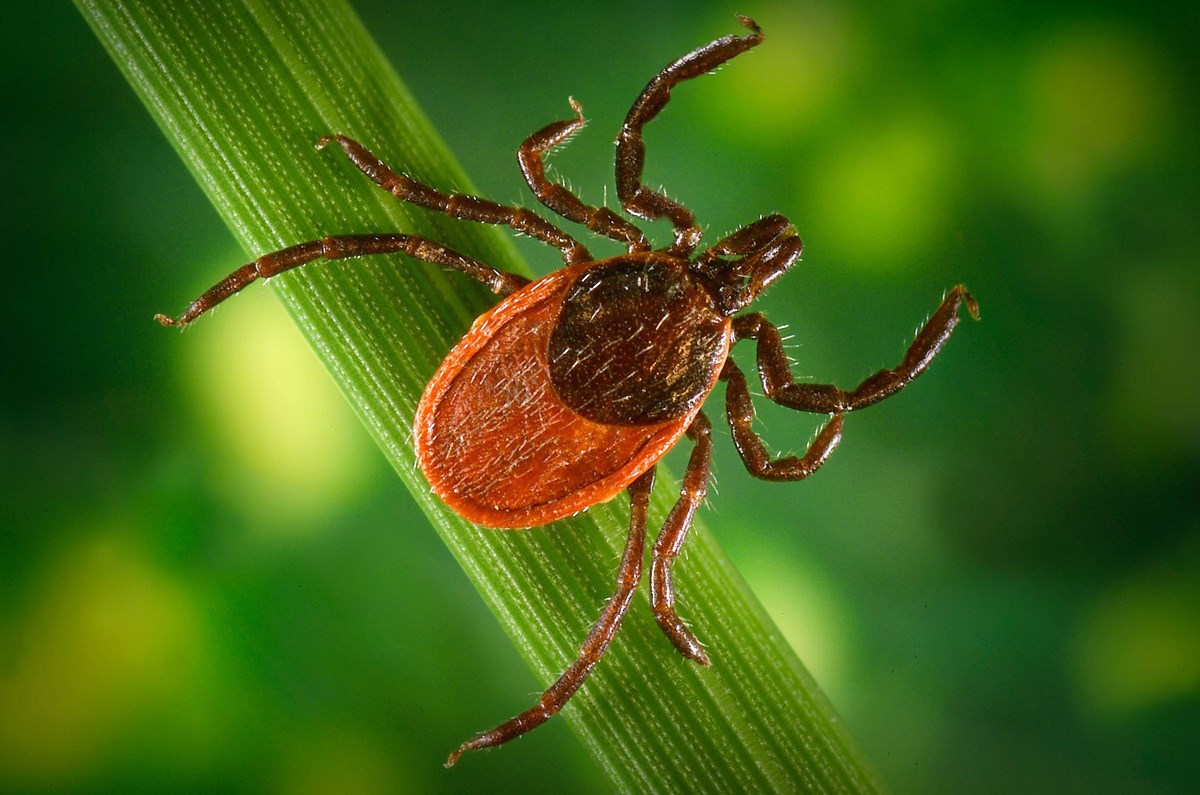Ticks are small spider-like creatures that feed by inserting their mouths into the skin of a host and slowly taking in blood. During the feeding process they can transmit infections through their saliva, which also has a numbing effect and so the bite can go unnoticed.
The two most common diseases transmitted by ticks in Central Europe are Tick-borne encephalitis and Lyme Disease.
What is Tick-borne encephalitis?
 Tick-borne Encephalitis (TBE) is also known as spring-summer encephalitis. It is a viral infection. Although the most common way to get the disease is from an infected tick, it can also be passed on by drinking unpasteurized dairy products from infected cows, goats or sheep.
Tick-borne Encephalitis (TBE) is also known as spring-summer encephalitis. It is a viral infection. Although the most common way to get the disease is from an infected tick, it can also be passed on by drinking unpasteurized dairy products from infected cows, goats or sheep.
The virus causes encephalitis which is an infection of the brain. It usually starts with a flu-like illness which may be followed a few days later by headache, neck stiffness and confusion. Coma can occur and between 1 and 5% of people infected will die. Of those who recover some will have permanent brain damage.
TBE is common in most European countries. The risk of acquiring the disease is highest during the summer months (April to September) as this is peak biting season for the ticks. There is no medical cure for TBE, prevention is therefore very important.
What is Lyme Disease?

Lyme disease is also transmitted by infected ticks. The disease is caused by a bacteria called Borrelia burgdorferi. It is also more common in the summer months when there is increased exposure to infected ticks. It was named in 1977 when arthritis was observed in a cluster of children in and around Lyme, Connecticut.
Flu-like symptoms such as fever, headache and muscular pains appear about a week after the tick bite. There may also be a rash on the skin at the site of the tick bite. This is very characteristic. The area around the bite becomes red and slowly expands. It may enlarge for several weeks. The center of the rash clears giving a “bulls-eye” appearance.
Without treatment up to 75% of those infected will develop problems later in life. These complications can affect the brain (meningitis, encephalitis), the heart and the muscles and joints. Most patients can be successfully treated with antibiotics if the diagnosis is made early enough.
Who is at risk?
Ticks are most commonly found in forests and woodland areas especially where there is heavy undergrowth. There is a small risk that ticks may be present in your garden. Those at highest risk are those who go walking or camping in wooded areas and all those who consume unpasteurized dairy products.
Can these diseases be prevented?
Taking sensible precautions to avoid tick bites is an important preventative measure. When walking in long grass or undergrowth wear suitable clothing that covers arms, legs, and ankles. Insect repellants that contain DEET are effective and can be applied directly on to the skin. Unpasteurized dairy products should be avoided. After visiting a high-risk area check your clothes and skin for ticks. Attached ticks should be removed promptly. The longer they are attached, the greater the risk of disease.
There is an effective vaccine available against TBE, however, this does not protect against Lyme disease. The recommended regime is 3 doses of the vaccine, the second dose usually being given 1 to 3 months after the first (this can be shortened to 2 weeks if necessary). The third dose is given after 9 to 12 months. This way protection will be provided for 3 years.
How to remove a tick?
Remove the tick using tick tweezers. Grasp it firmly and as close to the skin as possible. Pull the tick back and straight out. Do not twist it. Clean with antiseptic afterward and show the bite to a doctor.




